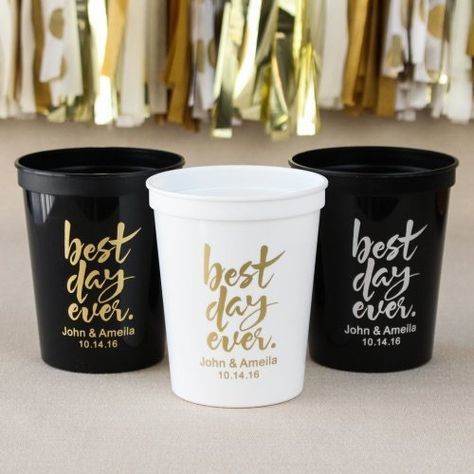Personalized Cup Design Ideas for Artists
1
0
·
2025/08/08
·
6 mins read
☕
WriterShelf™ is a unique multiple pen name blogging and forum platform. Protect relationships and your privacy. Take your writing in new directions. ** Join WriterShelf**
WriterShelf™ is an open writing platform. The views, information and opinions in this article are those of the author.
Article info
Categories:
⟩
⟩
Tags:
Total: 1485 words
Like
or Dislike
More from this author
More to explore











Artists often seek new ways to express their creativity beyond traditional mediums. Personalized cup designs provide a functional yet artistic platform to showcase unique styles. From bold colors to intricate details, these ideas help artists turn ordinary cups into memorable pieces of art.
Hand-Painted Illustrations with a Signature Touch
Hand-painted designs remain one of the most authentic ways for artists to personalize cups. By using specialized ceramic paints or markers, each piece becomes a one-of-a-kind creation. Artists can create portraits, abstract patterns, or even miniature landscapes that reflect their signature style. The beauty lies in the imperfections and personal touch that cannot be replicated by machines.
These designs allow for experimenting with color schemes, textures, and even layered effects. Artists can blend soft watercolors for a dreamy feel or use bold brush strokes for a striking impact. Once the paint is sealed and baked, the cup becomes both a functional item and a lasting piece of art.
To make the design process more meaningful, artists can draw inspiration from their surroundings or personal stories. A cup with a small hidden detail, like initials or a symbolic shape, adds sentimental value. It is also possible to combine painting with engraving for added depth.
This method works well for creating small collections or limited editions. Each cup tells its own story while still connecting to the artist’s wider body of work. For art lovers, owning such a piece means having a daily-use item that also feels like a collectible treasure. The personal touch of a hand-painted design ensures the cup will be cherished for years.
Branding Collaborations and Merchandise Opportunities
Artists can expand their reach by collaborating with brands, cafes, or event organizers. Custom-designed cups can serve as merchandise, promotional items, or gifts. In such cases, the design reflects both the artist’s style and the brand’s identity.
Collaborations may involve producing small runs for exclusive events or larger batches for retail. Artists can integrate logos, slogans, or thematic colors while keeping the design visually appealing. This creates a collectible product that promotes both the brand and the artist.
Packaging also plays an important role in these projects. Working with providers like https://ibexpackaging.com/custom-cups/ can ensure that the artwork is presented in a professional and durable way. High-quality printing and packaging protect the design and enhance the overall experience for customers.
For artists, such partnerships offer exposure to new audiences and potential income streams. A well-designed cup can become a signature piece that boosts recognition and builds long-term relationships with clients.
Minimalist Black-and-White Concepts
Minimalist black-and-white designs appeal to those who prefer clean, elegant aesthetics. For artists, this style offers a chance to play with contrast, line work, and negative space. Even with a limited color palette, it is possible to achieve striking effects that feel timeless.
Geometric shapes, simple patterns, and line illustrations work well in this style. Artists can experiment with varied line thickness or create optical illusions using only black and white. This approach works especially well for cups in matte or satin finishes, which enhance the modern and sophisticated look.
Minimalist designs also allow for precise detailing. Since there are no bright colors to distract the eye, viewers notice the quality of the line work and composition. Artists can incorporate small symbols, subtle lettering, or fine dots to add complexity without cluttering the design.
The production process is usually more straightforward, making this style ideal for consistent replication in small batches. Many coffee shops, galleries, or creative brands prefer minimalist cups for their professional yet artistic appeal. For an artist, this style can also double as a form of personal branding, making their work easily recognizable.
Nature-Inspired Watercolor Patterns
Watercolor designs inspired by nature bring softness and tranquility to cup art. Artists can draw from elements like flowers, leaves, mountains, or oceans to create fluid and calming visuals. Watercolor techniques allow for smooth color transitions and delicate layering that feel almost dreamlike.
The charm of this style lies in its organic imperfections. Blended colors mimic the natural gradients found in skies, rivers, or flower petals. The translucent effect of watercolor adds depth without overwhelming the eye. Artists can achieve this look through specialized paints or by digitally printing watercolor patterns onto cups.
Nature-inspired designs are versatile. They can be bright and cheerful with spring blooms or moody and dramatic with stormy waves. Artists can also personalize these patterns with handwritten notes, botanical names, or seasonal variations.
This style works beautifully for special collections, such as a summer floral set or an autumn leaf series. It appeals to those who love nature, mindfulness, or artistic calmness. The gentle feel of watercolor on a cup makes it ideal for tea drinkers or anyone seeking a peaceful moment during the day.
Abstract Expression for Bold Statements
Abstract designs offer complete freedom for artistic expression. Artists can play with color splashes, random brush strokes, and experimental techniques to create visually powerful cups. This style works well for those who want to showcase energy, movement, and emotion through art.
Bright, unexpected color combinations give cups a vibrant personality. Artists can apply paint through splattering, dripping, or swirling techniques to produce organic and unplanned patterns. The unpredictability of abstract art ensures that no two cups will ever look the same.
Beyond aesthetics, abstract designs can also tell deeper stories. The choice of colors and shapes can represent emotions, events, or even philosophical concepts. This makes each cup a personal and interpretive piece for the user.
Abstract designs also lend themselves to collaborations. Artists can work with brands, cafes, or galleries to create exclusive collections. These cups can become part of a larger art display, bridging the gap between functional items and fine art.
Typography and Inspirational Quotes
Typography-based designs combine visual appeal with meaningful words. Artists can experiment with fonts, lettering styles, and layout arrangements to make cups more than just drinkware. From playful phrases to inspiring quotes, typography can bring personality to each piece.
The placement of text matters as much as the words themselves. Curved lettering along the cup’s rim, large bold letters across the surface, or tiny hidden text inside the handle can all create unique effects. Artists can mix handwritten calligraphy with modern typefaces for added visual interest.
Quotes can be uplifting, humorous, or thought-provoking. They can also reflect the artist’s own voice or values. For example, a series of cups could feature short motivational phrases paired with simple illustrations.
Typography designs also work well in monochrome or minimal color schemes, ensuring the words remain the main focus. For branding purposes, artists can subtly include their name or logo without overshadowing the overall design.
Functional Art with Multi-Purpose Elements
Functional art takes cup design beyond visual beauty by adding practical features. For example, a cup could include a built-in coaster base, a detachable lid, or a matching spoon. Artists can merge form and function to enhance the user experience.
In this approach, the design complements the added features. For example, a floral pattern might match a lid’s carved petal shape. Artists can also use raised textures, grooves, or embossing to improve grip while adding visual depth.
Functional designs appeal to people who value usability as much as aesthetics. Cups with temperature-sensitive designs that change color with heat are another creative possibility. These designs allow interaction between the user and the artwork, making the cup feel alive.
When combined with eco-friendly materials, functional art can also promote sustainability. Artists can experiment with bamboo fiber, recycled glass, or biodegradable elements. This adds an ethical dimension to the creative process, appealing to conscious consumers.
Seasonal and Festive Themes
Seasonal themes offer artists a chance to refresh designs throughout the year. Cups can celebrate holidays, seasonal colors, or cultural events. This keeps collections dynamic and gives customers reasons to return for new designs.
Winter cups could feature snowflakes, frosty patterns, or cozy scenes. Spring might bring floral blooms, pastel colors, and fresh green leaves. Summer designs could highlight beaches, fruit patterns, or bright tropical hues. Autumn cups can showcase warm tones, falling leaves, and harvest themes.
Festive cups are also popular for special occasions like weddings, birthdays, or cultural festivals. Artists can customize these with names, dates, or event-specific motifs. Limited-edition seasonal designs often create a sense of urgency, encouraging collectors to purchase before they’re gone.
Seasonal cups not only connect with customers emotionally but also give artists ongoing creative challenges. This approach keeps the work fresh, relevant, and aligned with changing moods and trends.
Conclusion
Personalized cup designs open endless possibilities for artists to merge creativity with functionality. From hand-painted illustrations and minimalist concepts to seasonal themes and collaborative branding opportunities, each design approach allows for unique self-expression. These cups are more than just drinkware — they become personal statements, meaningful gifts, and even collectible art pieces. By experimenting with styles, techniques, and materials, artists can create designs that resonate with different audiences while staying true to their artistic vision.